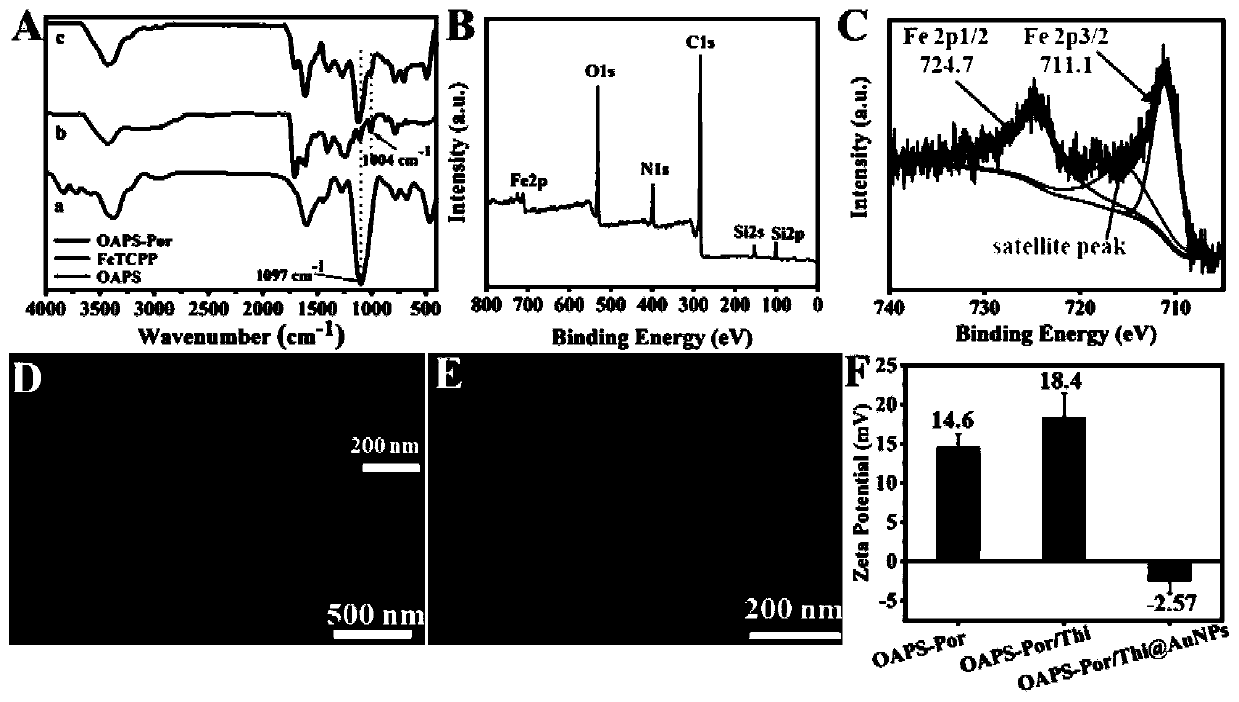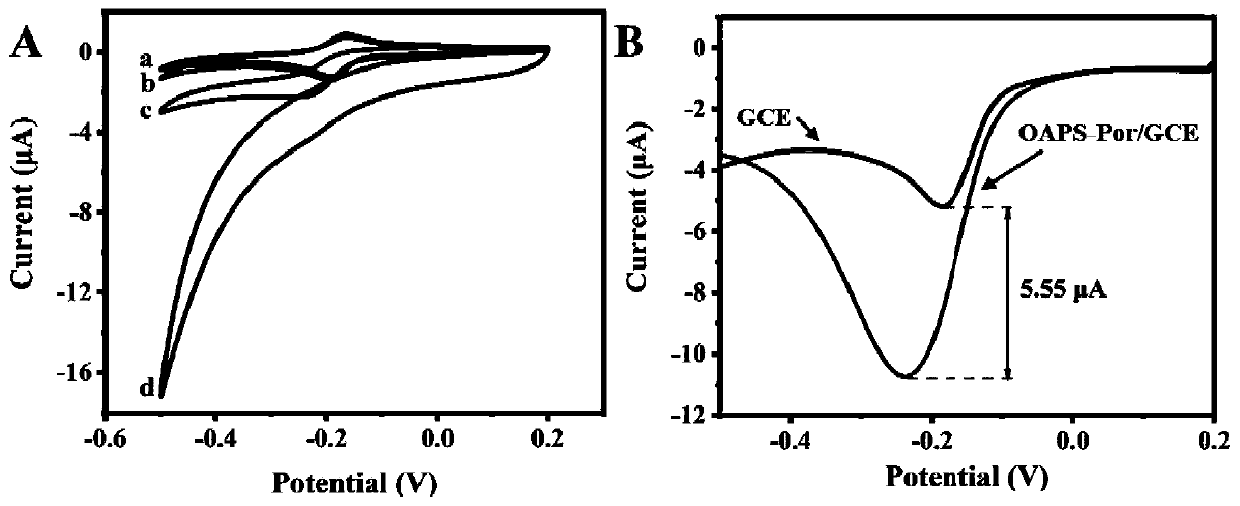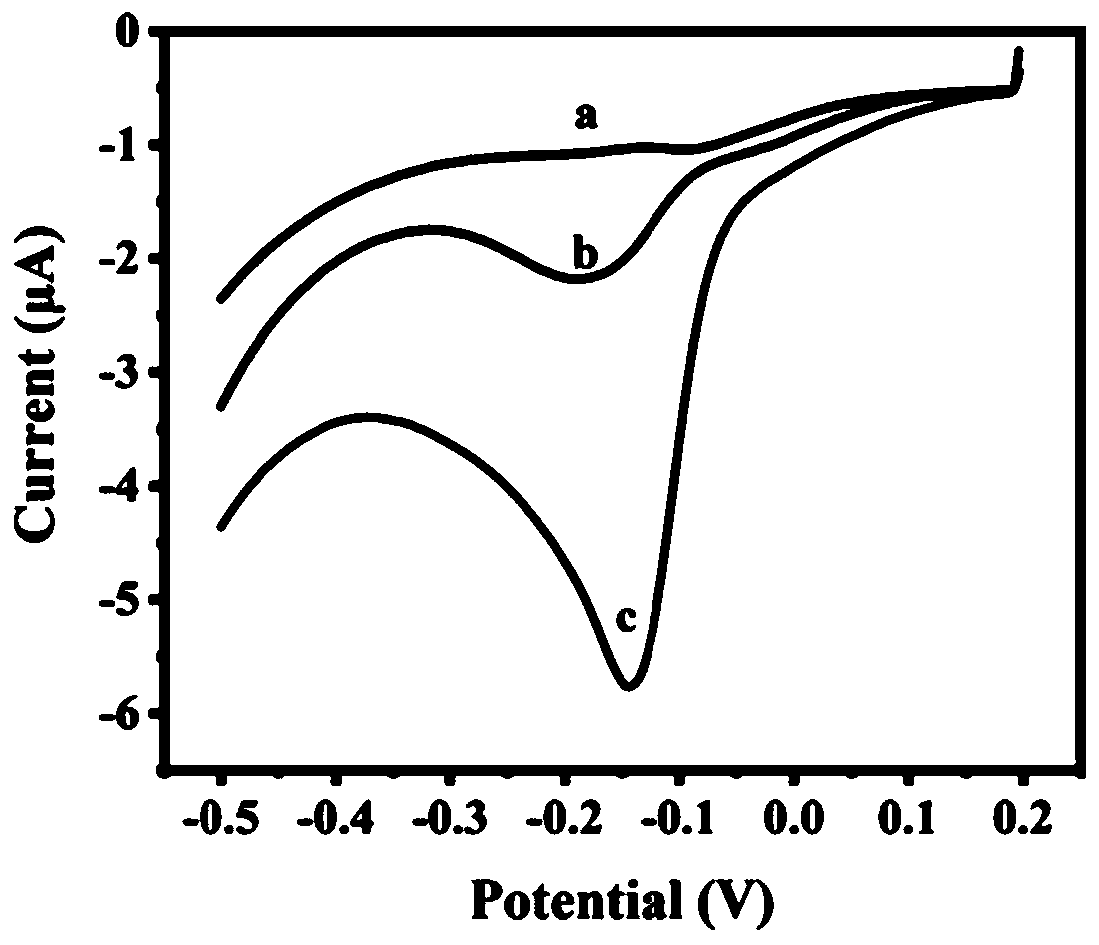Substrate-free electrochemical biosensor for detecting uracil-DNA glycosylase based on non-enzymatic nano-material signal amplification
A biosensor, glycosylase technology, applied in the field of electrochemical detection, can solve problems such as increasing operational uncertainty and affecting sensitivity, and achieves the effects of universality, enhanced sensitivity, and reduced detection cost
- Summary
- Abstract
- Description
- Claims
- Application Information
AI Technical Summary
Problems solved by technology
Method used
Image
Examples
preparation example Construction
[0050] As introduced in the background technology, in view of the complex operation steps, poor stability and poor sensitivity of traditional electrochemical biosensors for detecting UDG activity, this application provides a new substrate-free biosensor based on non-enzyme nanomaterial signal amplification A preparation method for an electrochemical biosensor, comprising the following steps:
[0051] (1) Preparation of porphyrin-based nanomaterials (OAPS-Por) and signal probes (OAPS-Por / Thi@AuNPs-ssDNA);
[0052] (2) Establish an electrochemical biosensor to detect uracil-DNA glycosylase (UDG).
[0053] The preparation process of porphyrin-based nanomaterials (OAPS-Por) and signal probes of the present invention comprises the following steps:
[0054] (1) Preparation of porphyrin-based nanomaterials (OAPS-Por):
[0055] First, 52.75mg of Fe(III)tetracarboxybenzoporphyrin was added to 100mL EDC / NHS (EDC: 34Mm; NHS: 34mM) mixed solution, stirred at room temperature for 12 hour...
Embodiment 1
[0078] The preparation of embodiment 1 electrode
[0079] (1) Use 1.0, 0.3 and 0.05μm Al respectively 2 o 3 Powder-polished glassy carbon electrode (d=3mm), then ultrasonicated in water-ethanol-water for 5 minutes, and finally dried with nitrogen gas for later use, recorded as GCE;
[0080] (2) Dip the treated electrode into 8mL of 0.8% HAuCl 4 In the solution, at a constant potential (-0.2V), deposit for 30s, rinse the electrode with ultrapure water 3 times, and record it as AuNPs / GCE;
[0081] (3) Drop 10 μL of annealed hairpin DNA (hDNA, 0.5 μM) on the electrode, incubate overnight at 4°C and ensure 100% humidity, then rinse the electrode several times with 10 mM Tris-HCl (pH=7.4), record for hDNA / AuNPs / GCE;
[0082] (4) Drop 10 μL of 1 mM 6-mercapto 1-hexanol (MCH) on the surface of the electrode treated in step 3, incubate at room temperature for 30 min, rinse the electrode several times with 10 mM Tris-HCl (pH=7.4), record as MCH / hDNA / AuNPs / GCE;
Embodiment 2
[0083] Embodiment 2 Preparation of porphyrin-based nanomaterials (OAPS-Por):
[0084] First, 52.75mg of Fe(III)tetracarboxybenzoporphyrin was added to 100mL EDC / NHS (EDC: 34Mm; NHS: 34mM) mixed solution, stirred at room temperature for 12 hours, and then 36mg of octaaminophenyl oligomerized sesqui Siloxane (OAPS) was added to the above solution and stirred for 24 hours. After the reaction was completed, a gray-black powder was obtained by filtration, and finally vacuum-dried at 80°C for 24 hours to obtain OAPS-Por, and a series of tests were carried out on it. representation, such as figure 2 .
[0085] The electrocatalytic activity of OAPS-Por on Thi was evaluated by measuring CV and DPV of different modified electrodes in 0.1M HAc-NaAc (pH5.0) solution containing 35 μM thionine ( image 3 ). 10μLOAPS-Por (1mg mL -1 ) and 10 μL of OAPS and FeTCPP at concentrations equivalent to those in OAPS-Por were dropped onto the GCE and measured after drying under infrared light. S...
PUM
 Login to View More
Login to View More Abstract
Description
Claims
Application Information
 Login to View More
Login to View More - R&D
- Intellectual Property
- Life Sciences
- Materials
- Tech Scout
- Unparalleled Data Quality
- Higher Quality Content
- 60% Fewer Hallucinations
Browse by: Latest US Patents, China's latest patents, Technical Efficacy Thesaurus, Application Domain, Technology Topic, Popular Technical Reports.
© 2025 PatSnap. All rights reserved.Legal|Privacy policy|Modern Slavery Act Transparency Statement|Sitemap|About US| Contact US: help@patsnap.com



